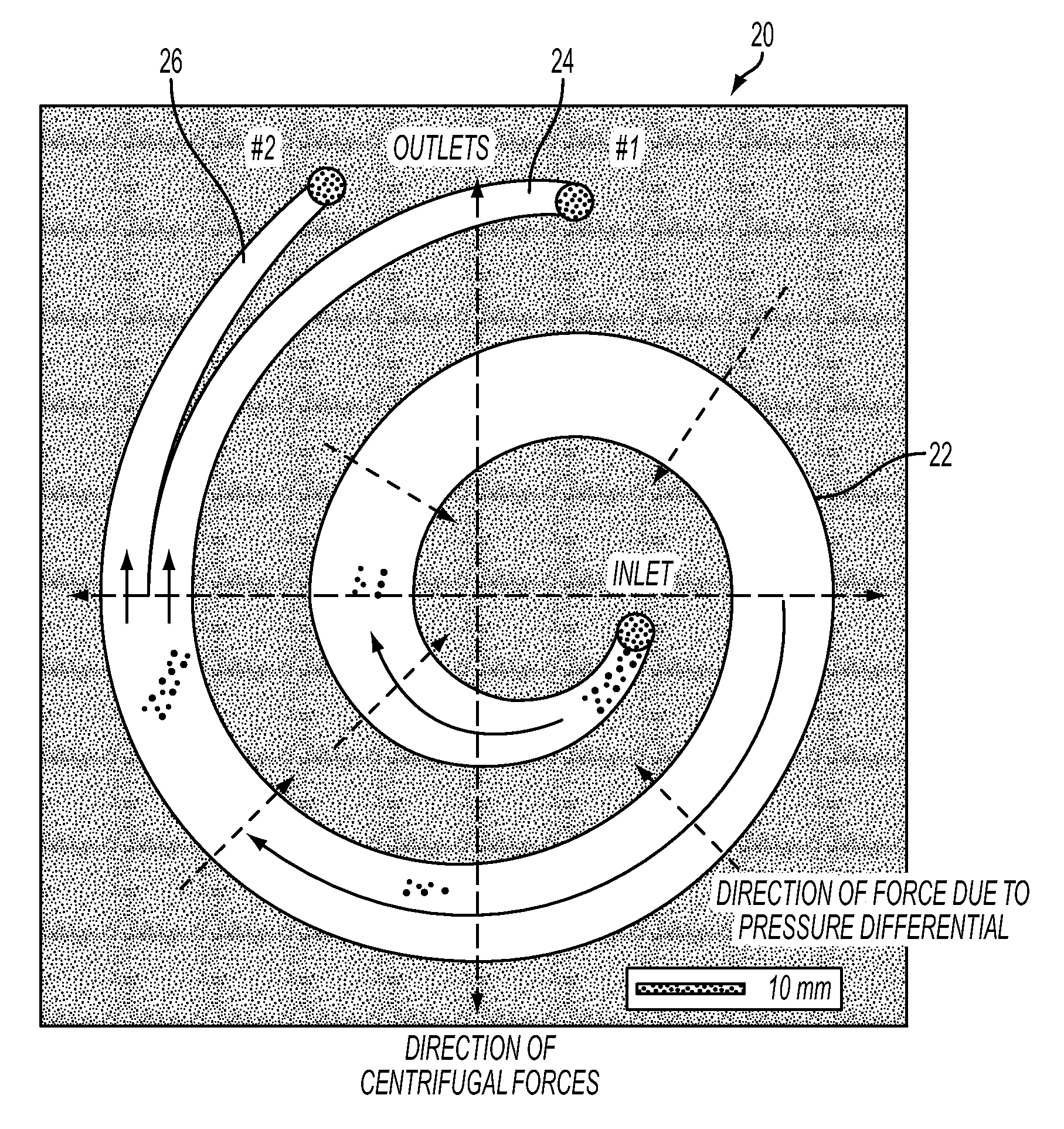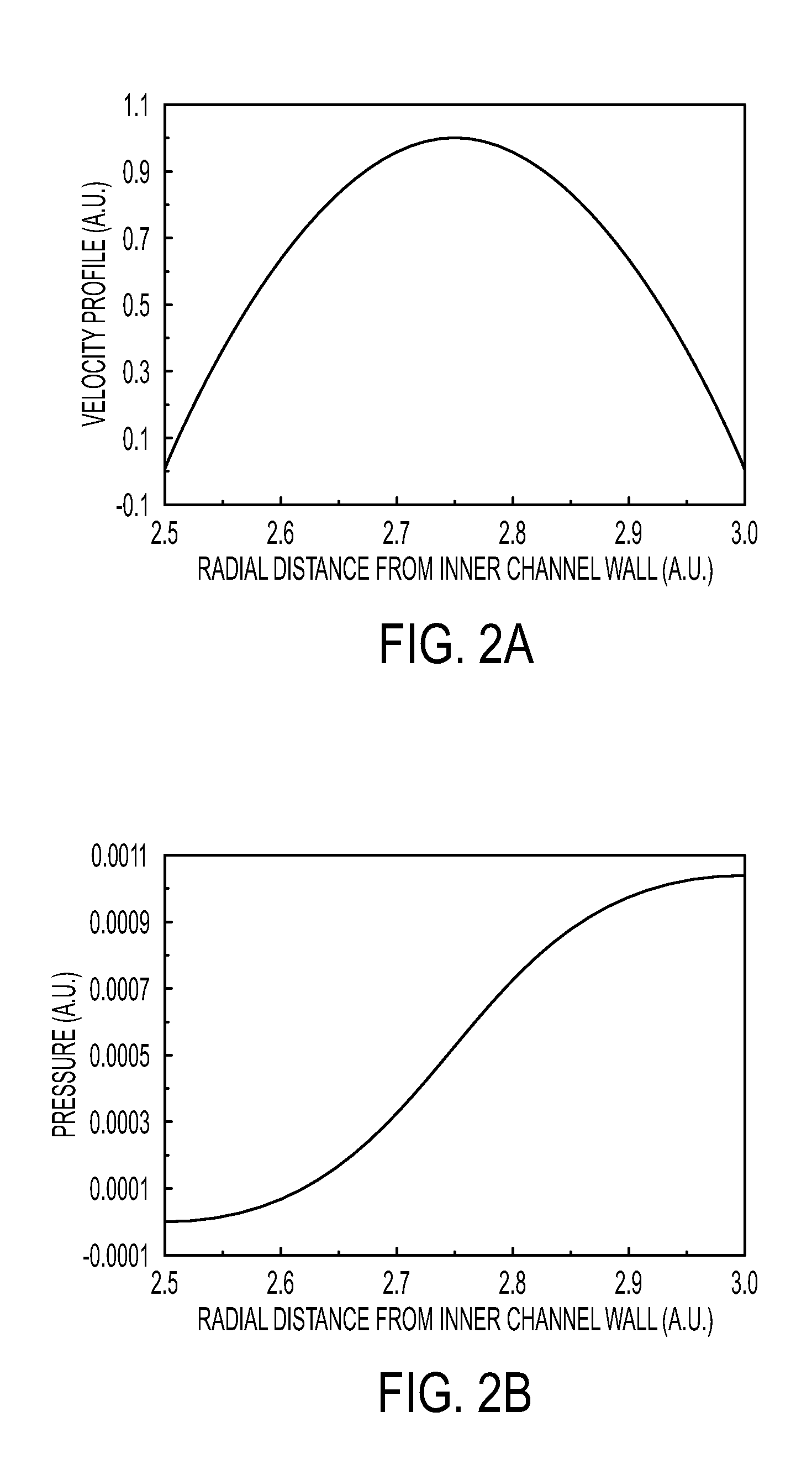Particle separation and concentration system
a technology applied in the field of particle separation and concentration system, can solve the problems of increasing the complexity of the device, particular field method, and the growth of most of the techniques, and achieve the effect of reducing the radius of curvatur
- Summary
- Abstract
- Description
- Claims
- Application Information
AI Technical Summary
Benefits of technology
Problems solved by technology
Method used
Image
Examples
Embodiment Construction
[0047]Systems according to the presently described embodiments utilize channel geometry and velocity to exert the required force to separate particles to outside or inside channel walls. These embodiments may span micro-scale to macro-scale fluid capacities. Thus, many forms are possible, allowing parallelization or extended channel lengths through helical stacking of planar structures. As an additional advantage, materials and fabrication cost are also very low, thus allowing for disposable use.
[0048]With reference to FIG. 1, a segment of a curved channel 10 showing various forces acting on a particle 12. Also, the velocity profile and the pressure distribution is shown.
[0049]Analytic consideration for the flow in a curved channel is as follows. In this regard:
[0050]V=Flow velocity
[0051]p=Pressure
[0052]Fcf=Centrifugal force on the particle
[0053]FΔp=Force due to pressure differential
[0054]Fvd=Force due to viscous drag
[0055]R=Radius of curvature of the channel
[0056]η=Dynamic viscosit...
PUM
| Property | Measurement | Unit |
|---|---|---|
| semicircular radius | aaaaa | aaaaa |
| semicircular radius | aaaaa | aaaaa |
| width | aaaaa | aaaaa |
Abstract
Description
Claims
Application Information
 Login to View More
Login to View More - R&D
- Intellectual Property
- Life Sciences
- Materials
- Tech Scout
- Unparalleled Data Quality
- Higher Quality Content
- 60% Fewer Hallucinations
Browse by: Latest US Patents, China's latest patents, Technical Efficacy Thesaurus, Application Domain, Technology Topic, Popular Technical Reports.
© 2025 PatSnap. All rights reserved.Legal|Privacy policy|Modern Slavery Act Transparency Statement|Sitemap|About US| Contact US: help@patsnap.com



